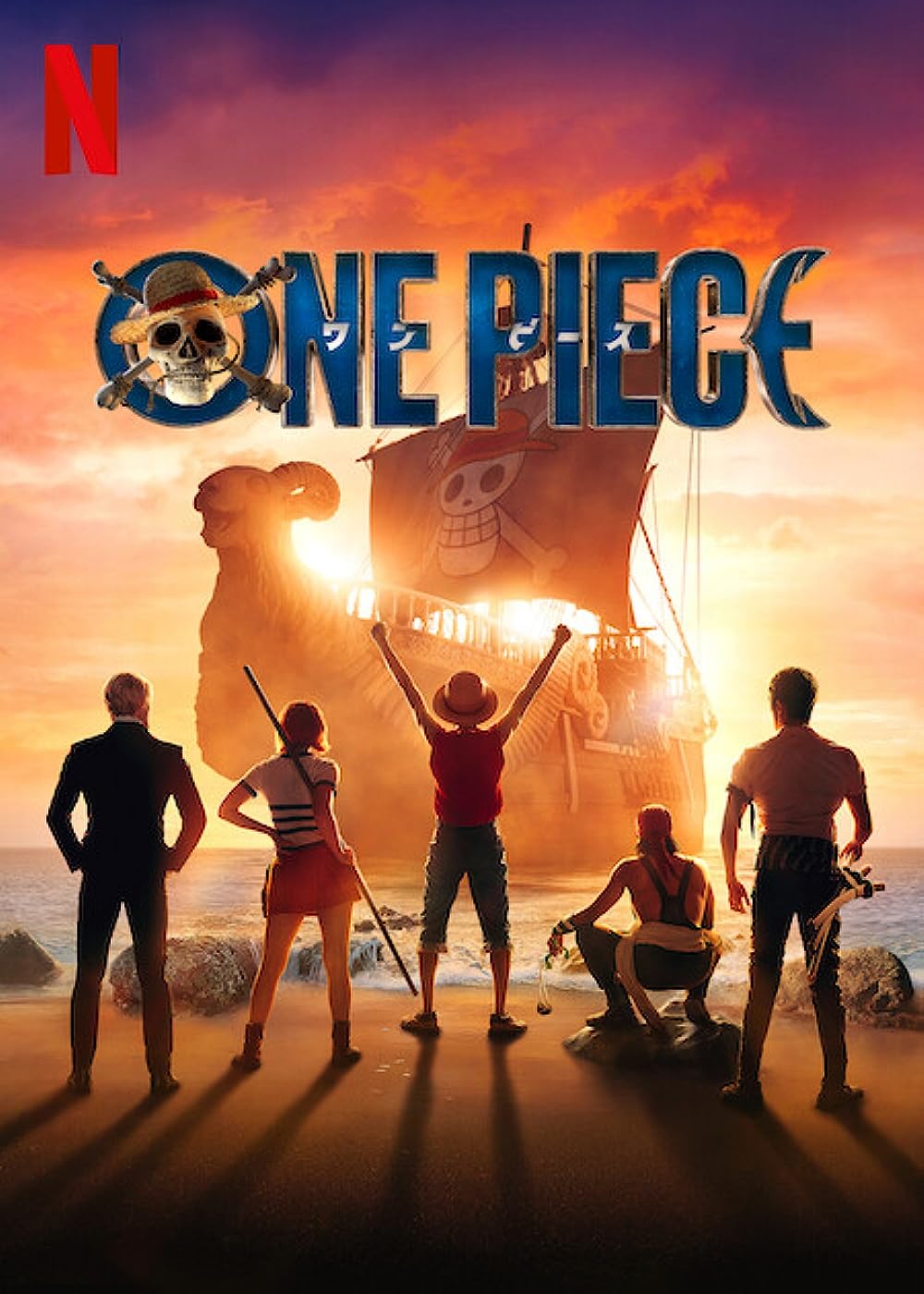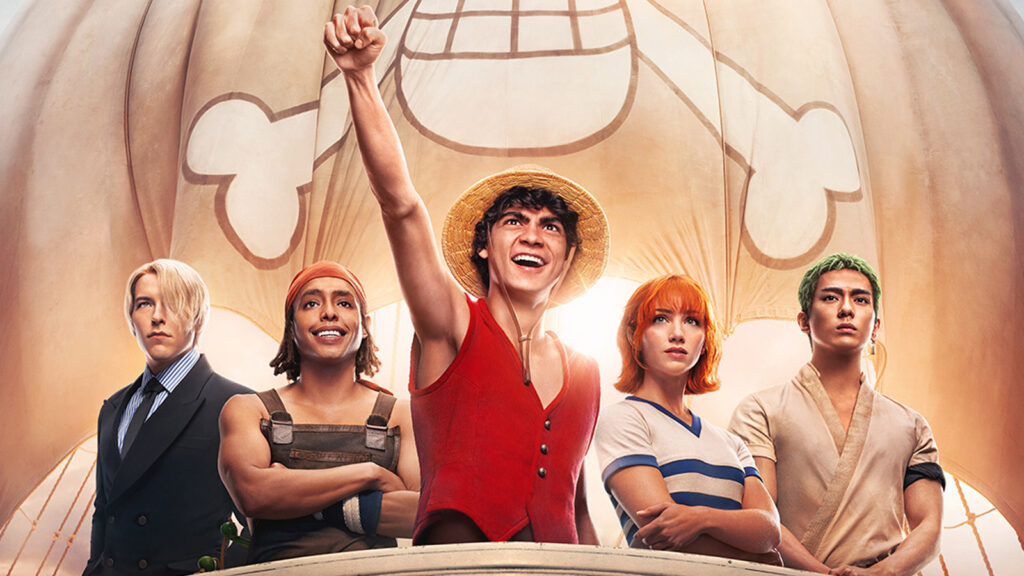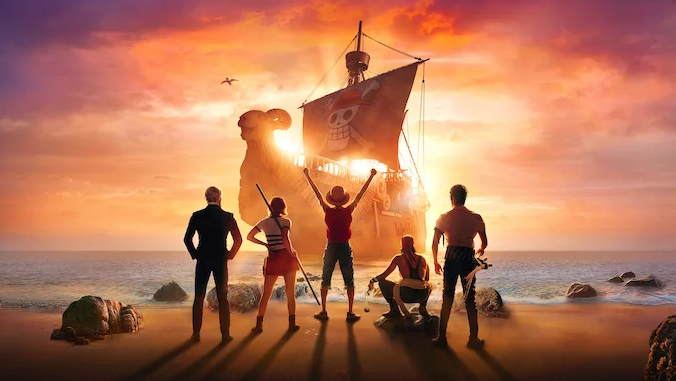
Writers of original TV shows have to check a lot of boxes. If you’re writing on spec and trying to break in, here are some of the key duties of your original pilot script:
1. A pilot is a promise – It demonstrates what a typical future episode might be in terms of tone, execution, and story potential—all within the context of the format and platform of your series.
2. A pilot is a first date – It presents compelling characters we’ll root for over the course of a long-term (perhaps several years) TV-watching relationship.
3. A pilot is a set-up – It positions the character at the start of a transformation that will range from stasis = death to at least some movement. Their ordinary world has been shaken and they can’t help but notice and take some action. A whiff of change is in the air and the character’s transformational theme is evident.
4. A pilot is a launchpad – It compels people to watch the next episode and kicks off a story with enough energy and potential that it can last one, two, or 10 seasons.
5. A pilot is awesome – It tells a complete story with a cathartic ending.
6. A pilot is you-on-a-plate – A unique you-on-a-plate story demonstrates your voice and represents who you are as a writer and a person.
Our original pilots are more than first episodes, they’re full-on pitches. But they’re not just pitching TV series; they’re pitching us as high-level storytellers with a voice and something to say.
Sometimes, pilots don’t do enough, especially when they’re leveraging well-known IP.
What’s cool about One Piece’s Episode 1 is that even though it’s based on IP, it does a great job at selling and pitching and telling an encapsulated story.
It lands all of the above checklist. There’s a lot of craft on display and a lot to learn from.
Let’s have a look!
ONE PIECE S1 E1
Franchise Type: Man With a Plan – The first episode sets up a Season 1 about a team on a quest for treasure.
Title: “One Piece: Romance Dawn”
Genre: Buddy-Fleece – Episode 1 tells the story of stealing the treasure map—a first-step goal to the bigger quest for the One Piece. The story also brings together a team but gives specific focus to a Luffy/Koby buddy story that reflects the theme and does the heavy lifting of a Whiff of Change.

Opening Image: In the Wild West of episodic storytelling, you get mere seconds to hook your audience. Like many shows, One Piece starts with an “Opening Pitch”—using its first minutes to serve as a teaser trailer for the world and the series. With a pulpy-adventure-style narration, the show establishes its fantasy world of pirates and throws us into the middle of a sticky situation: the execution of that world’s most notorious rogue.
The fast-paced opening plays out with stylized breaking-the-fourth-wall touches, snark in the face of danger, and Manga-style violence, all while setting the stage for the quest for the titular MacGuffin that will drive the series. With his final words, Gold Roger—the so-called King of the Pirates—refuses to reveal where he hid the treasure; instead, he cackles and sends out a call to adventure to the entire world: “My treasure is yours to find.”
The stage is set for an epic quest… and an epic show.
Theme Stated: In the Opening Pitch, Gold Roger also lays out the theme: “Wealth, fame, power… I found everything this world had to offer. Free yourselves, take to the seas, my treasure is yours to find.” Free yourself and following your dreams is what One Piece is all about.
Set-Up: We fast-forward 22 years, and meet Luffy, a young, optimistic pirate wannabe. Right off the bat, the episode works overtime to make a great first impression of our plucky hero and establish his Rooting Resume.
* He’s an underdog – For a pirate, he’s basically a harmless kid in a straw hat. He has no weapons. No crew. And his boat is a tiny rowboat that kind of sucks. The ocean is big and dangerous and Luffy can’t even swim! No one takes him seriously. Even a seagull bails on him, wanting no part of his mission.
* He has a dream – Despite all this, Luffy has huge dreams: to find the One Piece and become the King of Pirates! He’s determined and convinced he’ll do both. We sense he’s a little naïve. But his unflappable confidence wins us over.
* He’s fun & funny – He smiles through adversity and his optimism is infectious. The world is his playground. He’s searching for the Grand Line, a pirate graveyard that’s one of the most dangerous places in the world. To him, it “sounds kind of fun.”
* He cares about others – He sees their potential. He knows their heroic side. He wants to help others achieve their dreams, too.
* He’s a spectacular failure – His boat sinks and he ends up in a barrel. To make matters worse, his barrel floats into the middle of a wild pirate battle!
Next we meet Captain Alvida and her crew. The story uses a tactic that’s common place in these big worlds with multiple characters. It moves to new introductions in a “pass the baton” way—first we introduce our main hero, Luffy, then when our hero bumps into a new character, the focus is “handed off” to that character. And so we are introduced to Alvida, who is violent and ruthless and worried about the pirate hunter “Roronoa Zoro” (another bit of baton passing).
Luffy stows away on Alvida’s ship and meets Koby (who will become a buddy of sorts for this episode). Thematically, Luffy’s belief in freedom and adventure contrasts with Koby’s view of pirates as ruthless criminals, further sowing the theme of freedom vs. oppression and transitioning us to a flashback showing Luffy’s childhood with Captain Shanks, giving insight into his character and motivation.
Catalyst: Luffy clumsily awakes the pirate crew. As they surround him, he naively drags poor Koby into it. A fight sparks between him and Alvida’s crew, showcasing Luffy’s unique “Plastic Man” super-abilities, and leading to Alvida’s defeat.
B Story: B Stories tend to float around and this one starts early. Alvida has mentioned Roronoa Zoro a few times, and now we meet the great pirate hunter/swordfighter. He ticks a lot of the same Rooting Resume boxes. He’s a pirate hunter with his own dream: he wants to become the world’s greatest swordsman. He’s snarky in the face of death and he makes his own decisions—“I kinda got my own thing going on.” Instead of being forced into joining the ranks of another swordsman, he gets into a duel with another swordsman… and we see his amazing skills. He’s on his way to becoming the world’s best swordfighter (another common Rooting Resume trait).
Debate: Now on a ratty rowboat taken from Alvida’s ship, Koby questions Luffy’s decision to become a pirate, setting up a debate about the values and morality of pirates and marines. Luffy’s backstory with Shanks further illustrates his desire for freedom and adventure while also showing us the origin of Luffy’s stretchy powers. But for all of Luffy’s optimism, he doesn’t have a plan or a sense of direction… he doesn’t even have a map!!
Break into Two: Koby shares his own dream: he always wanted to be a Marine. Luffy, sensing a fellow dreamer, insists on making this happen. They’ll plot a course to the next Marine base. Koby will join up and Luffy will steal the map to the Grand Line! It’s win-win. They’ll go together. Partners!
NOTE: Pilots/First episodes don’t always adhere to a timeline. There are no “Midpoint is always on page 30” rules. These stories still hit all the beats in order (with the exception that sometimes the B Story floats) but they often spend over half their time in Act 1 carefully introducing ensembles of characters. This gives less time for Acts 2 and 3.
C Story: In the place where we usually find the B Story, we meet a new character, Namia. She’ll be part of the pirate team going forward. But here we see her conning a boat from a pair of pirates. She’s cool and fun and clever! She finds their map and sets sail to Shells Town! The Marine base!
Fun and Games: Luffy and Koby arrive at Shells Town. They head to a local tavern for a pre-heist meal as they discuss the plan. (Luffy’s full of horrible ideas.) It’s here our other future crew members first assemble, right now as strangers. When Captain Morgan’s son bullies a little girl, Zoro intervenes in a Save the Cat! moment. The others watch as Zoro takes on a bunch of Marines and does his sword magic. Namia uses the distraction to steal a Marine uniform, as Luffy admires Zoro’s skills and heroism. Victorious, Zoro heads off to meet Captain Morgan to collect a reward. Morgan is impressed but insists on stringing him up in the yard for beating up his Marines. Rules are rules after all.
After witnessing Zoro protect the little girl from the Marines, Koby questions the way the world works. Maybe Marines aren’t the heroes he thought.
Midpoint: Luffy pops inside the base and comes face to face with strung-up Zoro. This brings A and B Stories together. Luffy offers Zoro a spot on his crew but Zoro is a pirate hunter and Luffy is a pirate—complete opposites. In talking, Zoro states his dream to become the world’s greatest swordsman. Luffy unties him… he does love a dreamer!
Then A Story crosses C Story when Luffy and Namia meet deep inside the cellar of the Marine base. They both want the map and hastily team up as they sneak through the Marine base. They’re a team, even if Namia insists “Not a team!”
Bad Guys Close In: They go directly to Captain Morgan’s office. With a ruse straight out of Star Wars, Namia pretends to be a Marine and Luffy a prisoner. They encounter the imposing and suspicious Captain Morgan and talk their way past. As the Captain marches away, Namia manages to pick his pocket and they head to the office and steal the safe. Zoro is imprisoned by Captain Morgan, setting the stage for a conflict and highlighting the harsh Marine regime.
The Marines sound the alarm and close in on Namia and Luffy. Eventually, they’re trapped in the courtyard. Zoro has a chance to walk out… but seeing Luffy and Namia in trouble, he joins the fight. They dispatch the Marines and turn to the gates.
All Is Lost: Captain Morgan blocks their path. He raises his big axe hand. Their escape will not be easy.
Dark Night of the Soul: There’s some monologuing here by Captain Morgan. But it’s not the deep soul-searching we’d see in a feature. He basically makes the claim he’s undefeated when it comes to kicking butt. Things seem grim.
Break into 3: In a Sergio Leone-style series of close-ups… the team cracks knuckles and pulls swords! They’re all on the same page and a fight is going down!
Finale: A wild and energetic battle ensues. Our trio of heroes work as a team against Captain Morgan. Each shows off their unique fighting skills. Ultimately, Luffy knocks out Morgan with his signature “Gum Gum Whip” move.
The gang takes the safe to the docks and when Morgan’s son tries to stop them even Koby joins in knocking him out. But Koby’s not joining them, he’s making his own path. It’s a Whiff of Change: Koby’s making his own decision. In a Whiff of Change Stated moment, Koby says he’s going to be a Marine, but a good one, one who helps people who can’t help themselves. And so he warns the next time they meet, they might be enemies.
Final Image: In a second Whiff of Change, the trio rides out to sunset—a real team, the crew Luffy was looking for when we first met him… even if the others insist they’re not. They sail off on their quest, filled with the promise of a premise of underdogs on a high-seas adventure.
If that’s not enough to get us to tune in to Episode 2, the story gives us two final cliffhangers hinting at the escalated conflict to come: Vice-Admiral Garp (the man who executed Gold Roger) and the looming threat of a very Joker-esque pirate, Buggy the Clown with his $15,000,000 bounty! This guy is bad… really bad!
So, how does One Piece’s first episode do with our stated pilot checklist?
1. A pilot is a promise – The episode promises a unique pirate world filled with fantasy and superhero touches, fun/snarky characters, over-the-top wild villains, and action delivered with heart and charm.
2. A pilot is a first date – Luffy, Zoro, Namia, and Koby all get tons of Rooting Resume material. They have dreams and heroic sides. And they’re fun, brave, and heroic.
3. A pilot is a set-up – Luffy is a catalyst character. In the first episode he inspires change in Koby—and the feeling is he’ll continue to change people around him with his optimism and commitment to freedom and his dreams.
4. A pilot is a launchpad – The show’s plot is clearly present. It’s a quest for the MacGuffin where our makeshift crew will battle marines and an escalating level of pirates, sea monsters, and challenges!
5. A pilot is awesome – The pilot is more than just a teaser or a set-up beat. It tells the story of the heist of the map to the Grand Line, giving us a satisfactory conclusion to the story.
6. A pilot is you-on-a-plate – The pilot is filled with winky charm, from the use of wanted posters to moments where Luffy is talking to the camera. This episode is thick with a stylized tone, with winky fourth-wall-breaking storytelling that makes it feel unique and filled with voice.
Consider the key duties of this original pilot script fulfilled!









